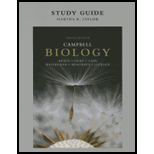
(a)
To create: A data table for all sampling sites by estimating the frequencies of lap94 allele using a pie chart.
Introduction: Mytilus edulis also known as marine blue mussel is found along the coastal line of the Northern Atlantic Ocean, including Europe, North America, and the Northern Palearctic. It is adapted to high salinity environment due to the presence of a locus for a particular allele, lap94. Lap (leucine amino-peptidase) cleaves the n-terminal amino acids from short peptides and releases free amino acids to the cytosol and thus regulates the mussel’s internal saltwater balance through osmoregulation.
(b)
To draw: A graph representing frequencies for sites 1-8 with respect to increasing salinity in Long Island Sound and to compare the data of sites 9-11 to the data from sites within the Sound.
Introduction: Mytilus edulis also known as marine blue mussel is found along the coastal line of the Northern Atlantic Ocean, including Europe, North America, and the Northern Palearctic. It is adapted to high salinity environment due to the presence of a locus for a particular allele, lap94. Lap (leucine amino-peptidase) cleaves the n-terminal amino acids from short peptides and releases free amino acids to the cytosol and thus regulates the mussel’s internal saltwater balance through osmoregulation.
(c)
To construct: A hypothesis to explain (1)the maintenance of mussels osmotic balance in high salinity environment by lap94 allele but is costly to use in less salty water and (2) long distance dispersal of mussels larvae before their settlement on rocks and grow into adults.
Introduction: Mytilus edulis also known as marine blue mussel is found along the coastal line of the Northern Atlantic Ocean, including Europe, North America, and the Northern Palearctic. It is adapted to high salinity environment due to the presence of a locus for a particular allele, lap94. Lap (leucine amino-peptidase) cleaves the n-terminal amino acids from short peptides and releases free amino acids to the cytosol and thus regulates the mussel’s internal saltwater balance through osmoregulation.
Want to see the full answer?
Check out a sample textbook solution
Chapter 23 Solutions
Study Guide for Campbell Biology
 Human Anatomy & Physiology (11th Edition)BiologyISBN:9780134580999Author:Elaine N. Marieb, Katja N. HoehnPublisher:PEARSON
Human Anatomy & Physiology (11th Edition)BiologyISBN:9780134580999Author:Elaine N. Marieb, Katja N. HoehnPublisher:PEARSON Biology 2eBiologyISBN:9781947172517Author:Matthew Douglas, Jung Choi, Mary Ann ClarkPublisher:OpenStax
Biology 2eBiologyISBN:9781947172517Author:Matthew Douglas, Jung Choi, Mary Ann ClarkPublisher:OpenStax Anatomy & PhysiologyBiologyISBN:9781259398629Author:McKinley, Michael P., O'loughlin, Valerie Dean, Bidle, Theresa StouterPublisher:Mcgraw Hill Education,
Anatomy & PhysiologyBiologyISBN:9781259398629Author:McKinley, Michael P., O'loughlin, Valerie Dean, Bidle, Theresa StouterPublisher:Mcgraw Hill Education, Molecular Biology of the Cell (Sixth Edition)BiologyISBN:9780815344322Author:Bruce Alberts, Alexander D. Johnson, Julian Lewis, David Morgan, Martin Raff, Keith Roberts, Peter WalterPublisher:W. W. Norton & Company
Molecular Biology of the Cell (Sixth Edition)BiologyISBN:9780815344322Author:Bruce Alberts, Alexander D. Johnson, Julian Lewis, David Morgan, Martin Raff, Keith Roberts, Peter WalterPublisher:W. W. Norton & Company Laboratory Manual For Human Anatomy & PhysiologyBiologyISBN:9781260159363Author:Martin, Terry R., Prentice-craver, CynthiaPublisher:McGraw-Hill Publishing Co.
Laboratory Manual For Human Anatomy & PhysiologyBiologyISBN:9781260159363Author:Martin, Terry R., Prentice-craver, CynthiaPublisher:McGraw-Hill Publishing Co. Inquiry Into Life (16th Edition)BiologyISBN:9781260231700Author:Sylvia S. Mader, Michael WindelspechtPublisher:McGraw Hill Education
Inquiry Into Life (16th Edition)BiologyISBN:9781260231700Author:Sylvia S. Mader, Michael WindelspechtPublisher:McGraw Hill Education





